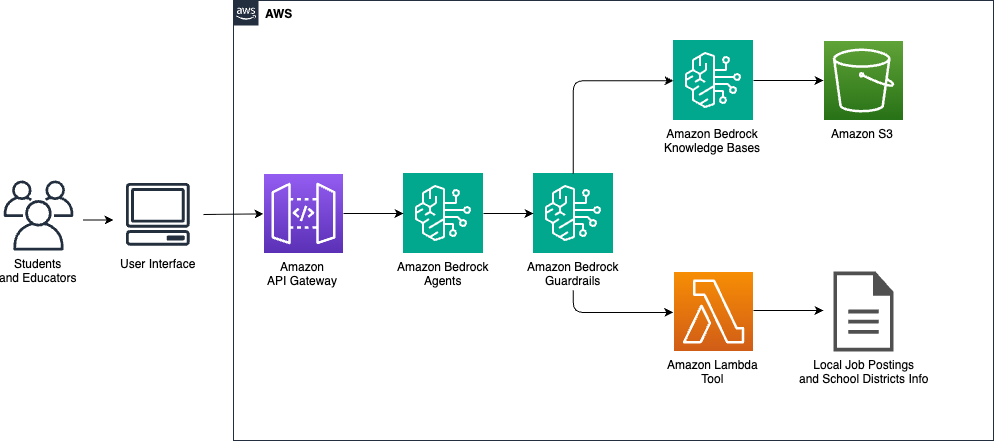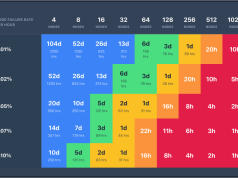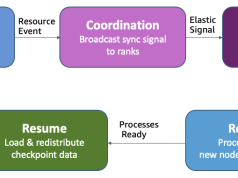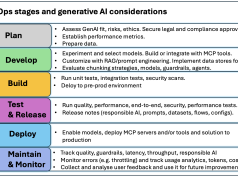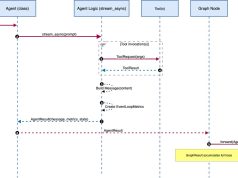This post was co-authored with Laura Lee Williams and John Jabara from University Startups.
University Startups, headquartered in Bethesda, MD, was founded in 2020 to empower high school students to expand their education beyond a traditional curriculum. University Startups is focused on special education and related services in school districts throughout the US.
After students graduate from high school, they don’t often know what they want to pursue for education and a career. University Startups and AWS have designed a unique program that helps students with disabilities solve that challenge. The program creates a personalized transition plan for each student and can be used in schools across the country. The program can provide specific guidance for each student to help them create their own path for success after high school. Specifically, University Startups uses Amazon Bedrock to create this customized experience without increasing workload for educators. The impact of this initiative has been successfully demonstrated during a pilot test program, where dozens of students and teachers used University Startups’ tool to explore different career paths and suggestions on how to pursue their goals.
In this post, we explain how University Startups uses generative AI technology on AWS to enable students to design a specific plan for their future either in education or the work force.
Challenges in special education
Special education includes services and programs to meet the individual needs of a student with a disability. There are more than 7.5 million K-12 students with disabilities in the US, and this number is growing. Students with disabilities who require special education services have Individualized Education Programs (IEPs). The IEP is a legally mandated document developed by a student’s parents, teachers, and specialists to make sure the student’s educational needs are met. This includes access to the general education curriculum together with general education peers, and as close to their home as possible.
An important component of the IEP document is a transition plan. A transition plan is a document that articulates objectives and development goals meant to prepare students with disabilities for adult life. This can include planning for postsecondary education and career goals, gaining work experience, independent living, or whichever option is appropriate for the student. This plan is highly individualized to a student’s interests, preferences, skills, and needs. According to federal law, each student must have a transition plan in place by age 16.
However, schools in under-resourced school districts often have limited capacity to provide ample one-on-one attention from teachers and counselors to create an effective transition plan for every student. Additionally, because these transition plans are audited by federal and state governments, these school districts can face legal and financial consequences if plans are not in compliance. These challenges highlight the need for a personalized and robust solution to empower students with disabilities and their support team of parents, teachers, and specialists. With this context in mind, let’s explore how University Startups and AWS collaborated to develop a solution using Amazon Bedrock to enhance the transition planning process.
Solution overview
To address this challenge, University Startups created Trinity, a transition planning AI assistant to support students with disabilities in uncovering their interests to create an effective and personalized transition plan. The following diagram shows how you can use Amazon Bedrock Agents in a workflow, alongside other tools, to provide context when gathering information to create a transition plan.
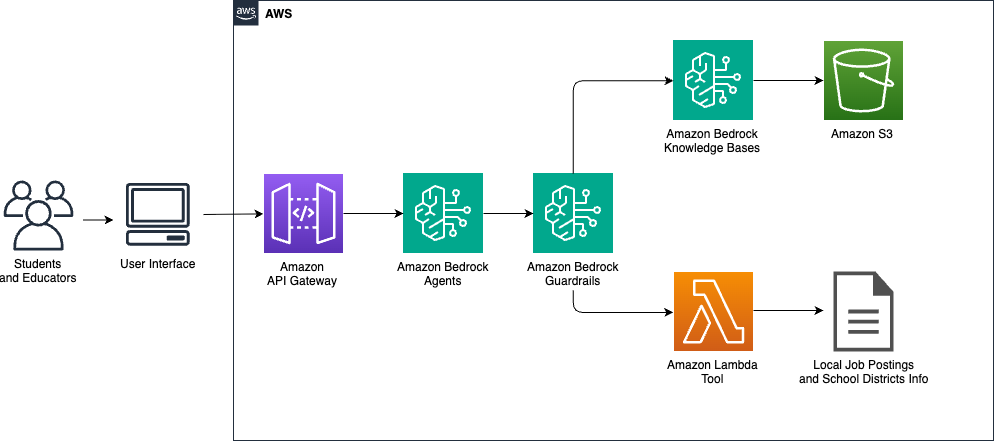
At a high level, the solution uses Amazon Bedrock Agents to orchestrate comprehensive workflows that engage students by enabling interactive, personalized AI assistant experiences. The agents use AWS Lambda functions to securely call external APIs, such as job boards or university databases, and retrieve up-to-date opportunities. Additionally, Amazon Bedrock Flows can automate the generation of the individualized documents by collecting and synthesizing information from these interactions into a personalized draft transition plan. Throughout the process, features like Amazon Bedrock Knowledge Bases and Amazon Bedrock Guardrails are designed to improve the accuracy and reliability of the information provided, and to align it with safety and compliance standards, creating a secure and effective support system for students, parents, and educators.
To begin the process, students engage with an agent designed with Amazon Bedrock Agents to uncover their preferences and interests, while under the guidance of their educators. The agent then proposes tailored suggestions on pathways the students can explore for their transition plans. These suggestions are informed by context provided to the agent about requirements for IEP documents and common transition plan structures. Based on this output, the student’s parents and teachers can efficiently create a transition plan with the student or continue engaging with the agent to dive deeper. In the following section, we take a closer look at the tools this agent uses.
Tools and features used by Amazon Bedrock Agents
The effectiveness of Amazon Bedrock Agents lies in its ability to engage the students in a productive manner and provide actionable results for parents and educators. This is accomplished by using features within Amazon Bedrock, such as Amazon Bedrock Knowledge Bases and Amazon Bedrock Guardrails, alongside other AWS services, including Lambda, to create tools for the agent.
Maintaining student safety
A critical component of this application is designing with student security in mind, especially when handling personally identifiable information (PII) and protected health information (PHI). Without proper protections, there can be risk of data breach and violating compliance regulations.
We use Amazon Bedrock Guardrails to implement safeguards within the generative AI system. If a user enters PII or PHI data, Amazon Bedrock Guardrails will detect this and automatically block the request, and will return a preconfigured message, such as “Sorry, your query violates our usage policy.” We also use Amazon Bedrock Guardrails to mask PIIs in model responses. If sensitive information is detected in the model response, the guardrail masks it with an identifier, such as {NAME-1}.
Amazon Bedrock Guardrails can also help make sure this resource is being used only for its intended purposes. Technology can often be a distraction to students, but Amazon Bedrock Guardrails can be configured with a set of denied topics and content filters so students can stay on track.
Using relevant context
Transition plans require specific information about a student by law. However, there is no singular format required for the IEP document across the US. Each state can have varying standardized formats, and in some states, individual school systems design their own forms.
Therefore, the resource needs to be able to gather the required information and present it in the appropriate format, according to the school system it is being used in. We use Amazon Bedrock Knowledge Bases to provide the agent with necessary context so it can deliver accurate, customized responses for each use case.
Use case
To understand the impact of this solution and show Amazon Bedrock Agents in action, let’s view an example of Noah, a student who used University Startups’ resource in a pilot test program.
Noah was preparing to create his own transition plan for his IEP document. He attends a school district that uses University Startups’ resource, so he creates an account to get personalized outputs for his IEP. The system agent began to gather requirements:
- The agent began by asking for Noah’s current performance and any special requirements he might need. Then, the agent asked Noah to share his interests and skills, and what he might be interested in pursuing after high school. Noah shared that he is interested in criminology.
- Then, the agent used Amazon Bedrock Guardrails to redact sensitive information that might have been entered. Then, it uses tools to provide recommendations on how Noah can pursue a career in criminology, including postsecondary education and internships. These recommendations were tailored for Noah, based on his needs and location preferences.
- Noah then chose to explore another pathway option and was offered steps to discover other methods to pursue a career in criminology.
- Finally, Noah was satisfied with the results and recommendations he received, and this information was formatted into a draft transition plan. This is then provided to the team of educators responsible for developing and finalizing his IEP.
This discovery process helped Noah fully explore his interests and options, while feeling confident that these recommendations were personalized to his needs. It also reduced the time required by educators to prepare for IEP meetings and submission.
Demonstrated impact
This solution developed by University Startups provides a safe and efficient way for educators and students to develop their transition planning IEP documents. By automating the planning phase, students can take their time to explore their interests and the different paths available to them after high school. The tool can also support a dialogue between teacher and student in cases where special assistance is required. A teacher who participated in the pilot program said, “I think Trinity is an awesome tool. I would love to see parents and their students use it together, especially before the IEP meeting. I also think it is a great conversation starter to be used between the student and their case worker/counselor.” Even in underserved school districts, students can receive personalized attention tailored to their needs that captures their perspective in the transition planning process.
Transition planning preparation can be time-consuming for educators and requires highly specialized knowledge. However, using the Trinity resource has produced results in approximately 10 minutes and has the potential to reduce the average time spent by educators on transition planning. This makes it possible for them to scale up their efforts and focus their time on actionable results for every student.
Additionally, this tool is able to engage students to thoughtfully share their interests and skills. Pilot program participant Noah said, “Using this tool was easy and helpful; it quickly showed me a path to get to the job I want to do in the future.” Most importantly, although this solution automates the discovery process for developing a transition plan, it guarantees hands-on educator support during each step and whenever a student requests assistance. Throughout the pilot program, educators have preferred to provide one-on-one support by guiding students through the Trinity tool. This makes sure that the students feel acknowledged throughout the process, and that educators can adjust and validate the transition plan recommendations provided.
Conclusion
Through this solution, University Startups has demonstrated how students, including students with disabilities, can receive personalized services despite a lack of resources in underserved school districts. This solution can empower students to pursue their interests and develop actionable plans to build skills and achieve success. Incorporating generative AI into educational resources demonstrates the effective capability of AI in learning environments. Educational tools powered with Amazon Bedrock can handle diverse student needs and provide instant feedback, which streamlines the creation of personalized learning pathways by educators. This allows high-quality, adaptive instruction accessible for every student.
John Jabara, co-founder of University Startups, shares,
“Amazon Bedrock allowed us to create a tool that can capture the student’s voice during this important transition planning process.”
As of the publication date of this post, University Startups is active in 15 states. As University Startups continues to scale, they plan to expand their reach across the country. The potential of tools like Amazon Bedrock Agents and Amazon Bedrock Guardrails in democratizing education and career resources for students is significant, and Amazon Bedrock is at the forefront of this initiative.
To learn more, refer to Amazon Bedrock Agents, Amazon Bedrock Guardrails, and Amazon Bedrock Security and Privacy. To get a hands-on introduction to creating your own agent with Amazon Bedrock Agents, check out the following GitHub repository.
Visit https://www.university-startups.com for more information on programming for special education.
About the authors
 Sadia Ahmed is a Solutions Architect at AWS supporting startup companies to transform big ideas into scalable solutions, with a focus on Generative AI. She is also passionate about educating the next generation of tech innovators. Sadia graduated from the University of Illinois Urbana-Champaign with a Master’s in Computer Science, and enjoys painting in her free time.
Sadia Ahmed is a Solutions Architect at AWS supporting startup companies to transform big ideas into scalable solutions, with a focus on Generative AI. She is also passionate about educating the next generation of tech innovators. Sadia graduated from the University of Illinois Urbana-Champaign with a Master’s in Computer Science, and enjoys painting in her free time.
 DeJonte July is a Solutions Architect at Amazon Web Services supporting early startup customers and helping make their entrepreneurial dreams come true. His primary focus lies on ethical use of Generative AI and technology communication. Outside of work he enjoys filmmaking and film photography.
DeJonte July is a Solutions Architect at Amazon Web Services supporting early startup customers and helping make their entrepreneurial dreams come true. His primary focus lies on ethical use of Generative AI and technology communication. Outside of work he enjoys filmmaking and film photography.
 Varad Ram is an Enterprise Solutions Architect supporting customers in Advertisement and Marketing vertical at Amazon Web Services. He collaborates closely with customers to design scalable and operationally efficient solutions. Currently, his primary focus is on analytics and helping customers maximize their return on investment in Generative Artificial Intelligence. In his free time, Varad enjoys biking with his children and playing tennis.
Varad Ram is an Enterprise Solutions Architect supporting customers in Advertisement and Marketing vertical at Amazon Web Services. He collaborates closely with customers to design scalable and operationally efficient solutions. Currently, his primary focus is on analytics and helping customers maximize their return on investment in Generative Artificial Intelligence. In his free time, Varad enjoys biking with his children and playing tennis.

